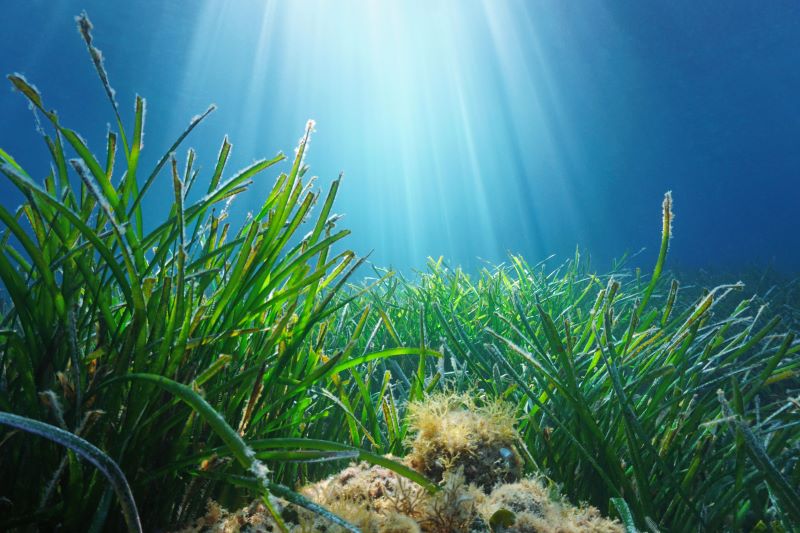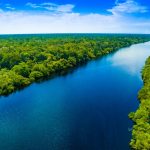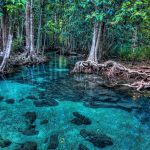Seagrass and Climate Change: Why Is It Important?
- Categories:
- Charities
- Climate Change
- Nature

What is seagrass?
Seagrass is a plant that lives in sheltered areas along coastlines, such as estuaries, lagoons and bays, and is vital to the health of our seas and our planet as a whole.
It is the only flowering plant that can live in seawater and pollinate while submerged. They often grow in groups which makes it look like an underwater meadow – hence the name seagrass.
It will only be found in shallow water as it relies on light for photosynthesis, which is why it is mostly found along coastlines. A wide range of species can inhabit seagrass due to its long leaves and density which creates a settled habitat.
As well as having the ability to capture carbon, seagrass is also an important habitat for marine life. The plants’ roots are also essential for stabilising the seabed and preventing erosion, which means it helps to protect the coastline.
Why is seagrass important for climate change?
Seagrass is vital as a natural resource that captures the carbon emissions that are causing global heating. Research shows that seagrass captures carbon up to 35 times faster than tropical rainforests. Even though it only covers 0.2% of the seafloor, it absorbs 10% of the ocean’s carbon each year.
In addition to this, seagrass is an important habitat for endangered wildlife and their young. A 10,000m2 area can support 80,000 fish and over a million invertebrates with food and shelter. This includes seahorses, as well as many fish such as cod, plaice and pollock.
However, up to 92% of the seagrass in the UK has disappeared in the last century. Much of this was due to a wasting disease that occurred in the 1930s, but seagrass has not recovered since this event, in part due to increased human disturbance along coastlines and pollution in the oceans. Sewage and other toxins, for example, act as a huge threat to the survival of seagrass.
Globally, 30,000km2 of seagrass has been lost in the last couple of decades which is equal to 18% of the global area.
Seagrass restoration
WWF is working with Sky Ocean Rescue and Swansea University to revive seagrass meadows by launching the largest restoration project that has ever been seen in the UK.
During the summer of 2021, volunteers have been collecting one million seagrass seeds from across the country. Now, the seeds are being cultivated and, this winter, they will be planted in Dale Bay in Pembrokeshire. They should grow into a 20,000m2 seagrass meadow.
This is just a pilot project and WWF are hopeful that this model will pave the way for large-scale seagrass restoration around the UK. This is more important than ever as seagrass will help to combat climate change and restore the health of our oceans. Such projects could then be rolled out globally to create a hugely beneficial ecosystem.
Projects like this are vital in the fight against climate change, which is why we are proud to say that WWF is one of our chosen charities. Here at SearchScene, we donate 95% of our profits to charities with a focus on combatting climate change and its effects. If you want to support the fantastic work WWF does, why not give our search engine a try?










